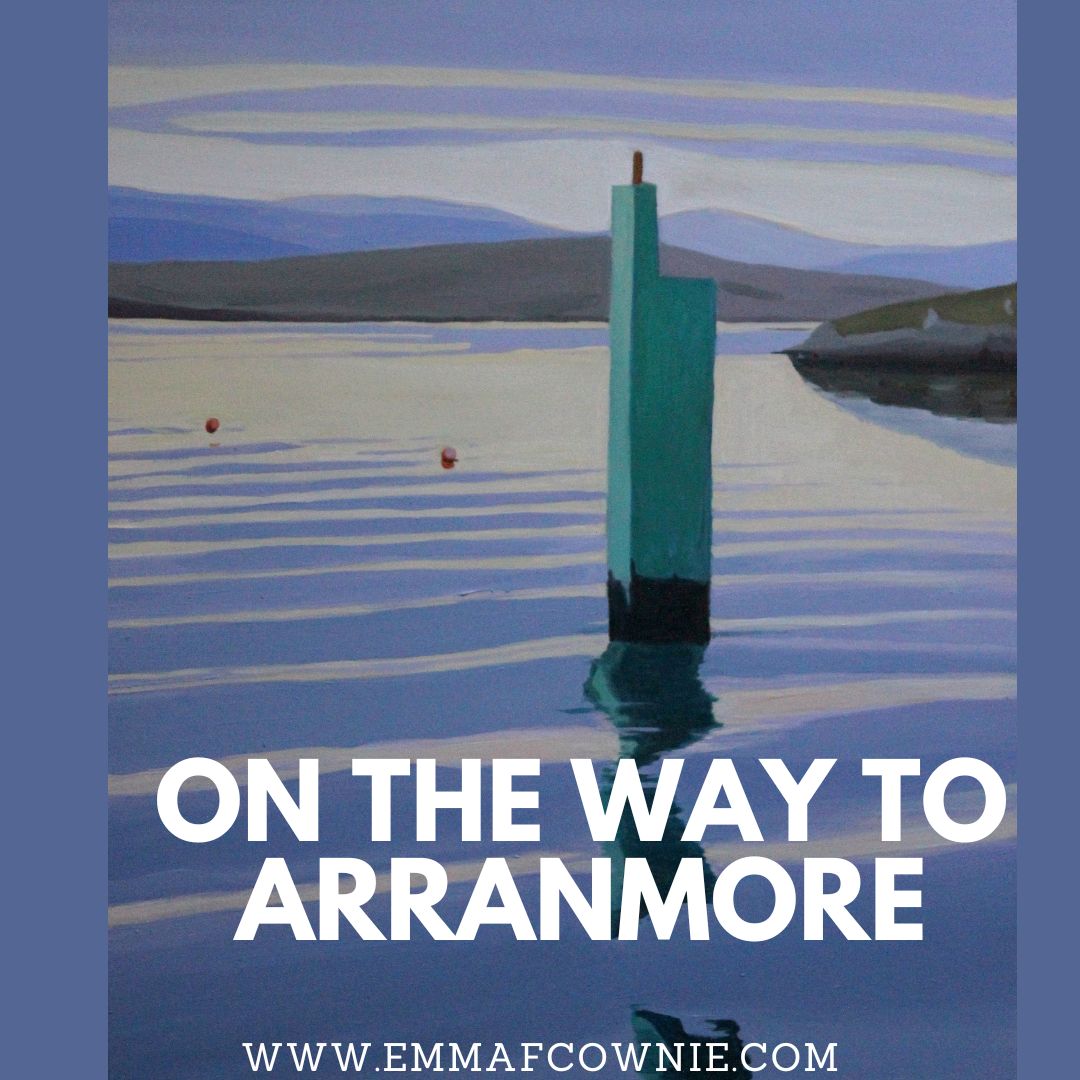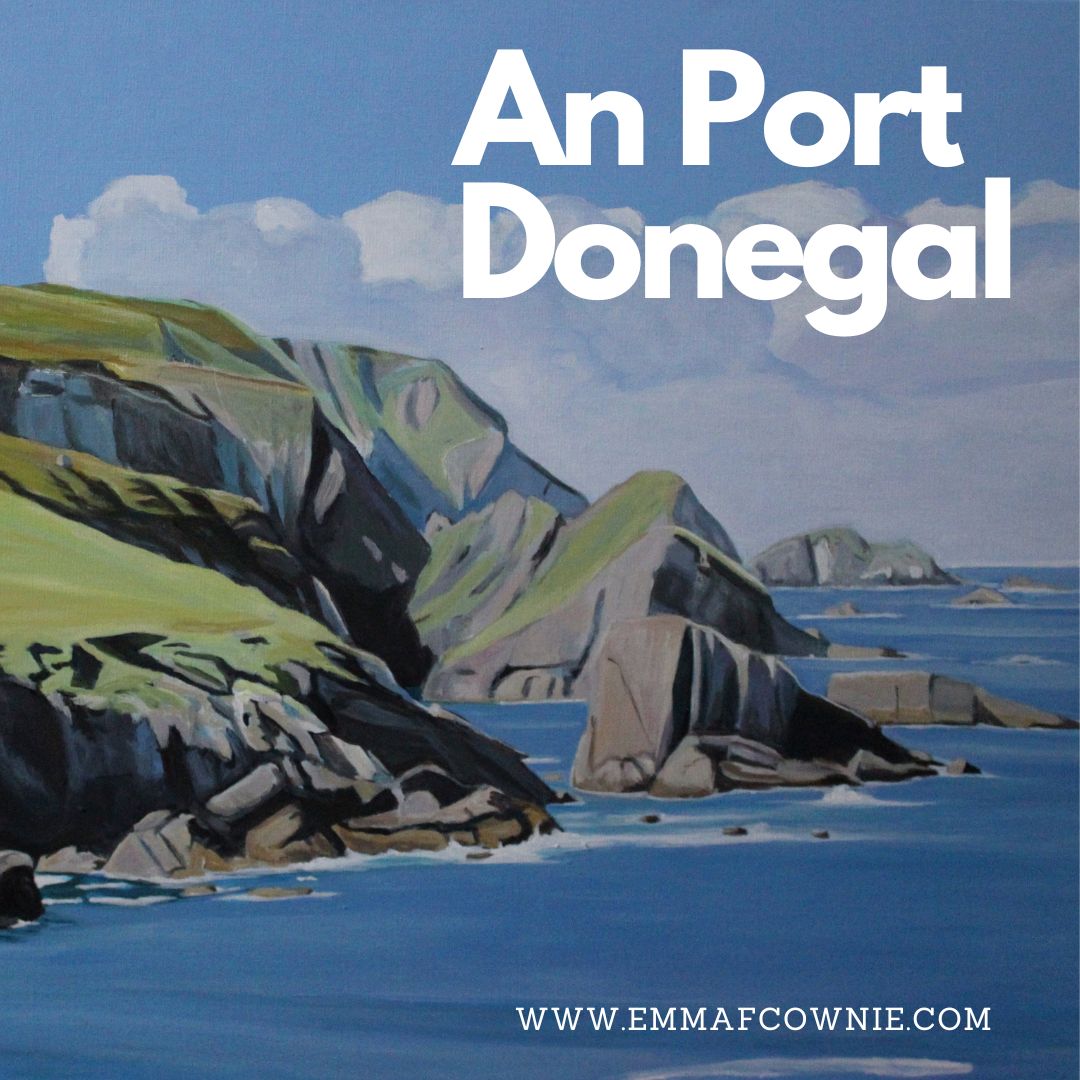
I have been suffering from writer’s block. I started this post in March this year. I keep writing, rewriting it and then not publishing it. The problem isn’t that I don’t have any thing to say. It is more that I have too much to say and I didn’t know where to start or how to structure what I want to say. It’s not about paint but thread and wool. I have been on a bit of an artist’s journey. It’s been quite a meander; off my usual painting path. I am not sure if it’s a dead end, another fad.

I discovered that here In the north of ireland it doesn’t start to get light here until after 9 am in the deepest winter and painting light often “goes” by 1 or 2pm. There wasn’t going to be a lot of time for painting. So I decided I needed another creative outlet to persue along side the painting to do in the hours of gloomy light and nights, under artifical light. I thought about sewing.
A certain photo haunted me. I had taken it back in Swansea before we moved over to Ireland. I was going through the exhausting process of sorting through my stuff and deciding what I could keep and what should go. I came across this moth-eaten piece of fabric. It was a piece I made in junior school. I took a photo of it. It’s not well made at all but I liked its carefree style and slightly chaotic composition. The moths had made quite a meal of it. .Those elephants once all had eyes. I enjoyed the bold colours It got me thinking. Embroidery/sewing was something creative I could do under artificlal light.
So I gave up trying to paint under artifical light in the mornings and evenings. Instead I took up sewing and embroidery. I have always liked the vibrant colours of embroidery floss. However, I found that it occupied my thoughts a lot of the time so much so that it was difficult to concentrate on my day time painting. I suppose the issue was that although I enoyed the action of sewing, I didn’t quite know in which direction to go with what I doing with it. It was slow and time-consuming and what I produced was small-scale. I was also torn between learning and practicing different stitches and what to do with them. Quite possibly this is an conundrum at the heart of all creative endeavours.
That delicate balance between skill and expression. If I make something without much skill it will just be crude and amateurish? If I make something that it is skillful – it may well have less personality and expression. And for that matter, as an artist, how do I feel about possibly straying into the world of “craft”? A world that is largely populated by women and with less status than art?
But what’s the difference between Art and Craft anyway? Good question. Like all lazy writers I looked it up on Google: ” Art is described as an unstructured and open-ended form of work; that expresses emotions, feelings, and vision. Craft denotes a form of work, involving the creation of physical objects, by the use of hands and brain. Art relies on artistic merit whereas craft is based on learned skills and technique.” So I was onto something. If I get too skillful at embroidery I am in danger of verring off into the world of craft. That’s worth bearing in mind although there’s little danger of me becoming too skillful.
Intially I lacked confidence, I collected images in a scrap book and on Pinterest and my early pieces aped people whose work I liked. I spent the winter admiring the work of many textile artists – the ones that come to mind right now are Sue Stone, Mandy Pattullo, Ann Smith (Persimonstudioart) as well as Japanese applique artists Mika Harasa and the incredible Ayako Miyawaki.

I was like a child in a sweet shop, verring off in first one direction than another. First I tried to copy the style of Sue Stone for a stitch portrait. I discovered that stitching a face is very much like drawing or painting a face, tiny details matter.
Then a bird inspired by the work of Mandy Pattullo and Ann Smith.

I wasn’t particularly happying copying other people’s style but I had to start somewhere. I couldn’t decide. The choice was bewildering. Was it line, colour, texture that I liked? Yes, yes, yes. I liked it all! I then tried freestyle style stitching in the hope that it would express my personal style. well, no. It got too chaotic. I enjoyed the mechanical action of sewing by hand. I tried dry felting and although my husband liked the chaos, I didn’t.
Freetyle Stitching

I wan’t sure if all this was coming from me or was just a mish mash of other people’s work. I needed a greater sense of control over what I was doing. I had to pause. I decided to rein it all in and try simple stitches again although I often prefered the messy underside of the work. Why is that?

I tried to explore the texture of birds feathers a little more.
Embroidery Robin – unfinished
Finally, I came around to a way of working that seemed to be a decent expression of my work in paint. I started getting where I wanted to go. The ancient and humble chain stitch. Turns out that the chain stitch is one the oldest and most widely known stitches in existence. Examples have been found in Egypt on textiles from Tutankhamun’s tomb, dated to the 14th century BC; on embroideries found in Pazyryk tombs dating from 4th-3rd century BC (excavated in southern Siberia but probably originating in China). I enjoyed it’s texture and it’s ability to fill space with colour.
I started with a semiabstract flower design based on a painting I had done many years ago.
Then I decided to try some Irish scenes. that I had painted. These satisfied me the most.




The work is maddenly slow but strangely therapeutic. There is something very compulsive about filling the space with colourful stitches. I enjoy running my fingers over the stitches. It also mad me think about what could be simplified into an embroidery an what sort of details could and could not be rendered in chain stitches. Getting the right colour thread was difficult at times. I made mistakes – a brown shadow rather than a bluish one. I tried to be accurate but somes I was forced to compromise, sometimes I just got it wong.
So now I have a small collection of tapestries very fond of in an in formal display in my living room. it’s been an interesting journey but I am not sure if its a cul-de-sac or “Grist-to-the-mill” part of a creative process. Maybe the reall problem is that I discovered that it was difficult to sew by hand under artifical light and the embroidery was competing with painting for useable daylight. It was a joy to return to speedy paint when the light improved. So, embroidery has drifted off into a bit of a back-water for the time being although I still have a couple of projects on the go.










































































































